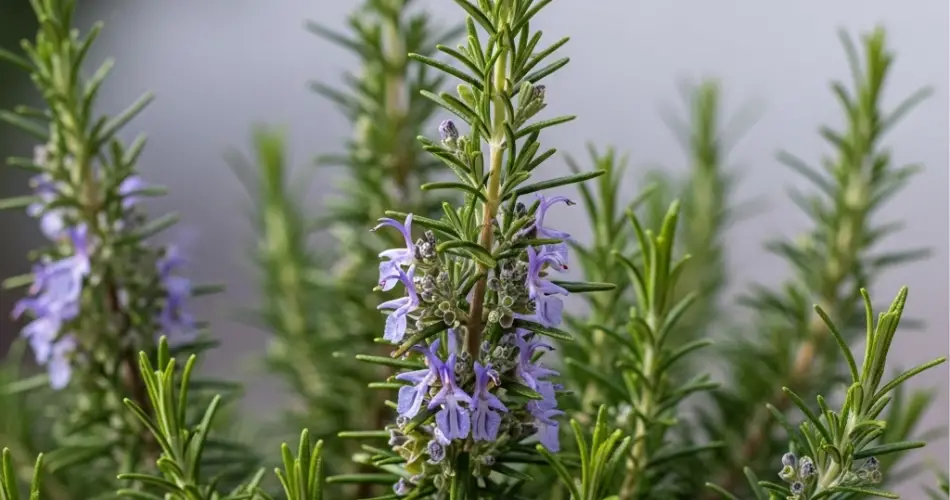Rosemary is a fragrant, versatile herb beloved by gardeners and cooks alike. Its needle-like leaves add incredible flavor to dishes, while the plant itself is a hardy, attractive addition to any urban garden or indoor plant collection. However, many people struggle with keeping rosemary healthy, often facing the frustration of a dried-out, brittle plant.
If you’ve lost rosemary before or want to avoid this common problem, this guide is here to help. By following these essential care tips and understanding rosemary’s needs, you’ll be able to keep your plant lush, green, and thriving all year long.
Understanding Rosemary’s Natural Habitat
Rosemary (Rosmarinus officinalis) is native to the Mediterranean region, where it grows in dry, rocky soil with lots of sunlight and good air circulation. Mimicking these natural conditions as much as possible is key to preventing your rosemary from drying out and dying.
Choose the Right Location
Rosemary loves full sun. It requires at least 6 hours of direct sunlight every day to thrive. Whether you’re growing rosemary in pots on a balcony or in an urban garden, choose a spot where it can bask in plenty of natural light.
If indoors, place rosemary near a south-facing window or under grow lights to make up for insufficient sunlight. Lack of light weakens the plant and makes it more susceptible to drying out.
Soil Requirements and Drainage
One of the main reasons rosemary dries out is poor soil drainage. Rosemary roots hate sitting in wet soil, which can cause root rot and eventually kill the plant.
Use a well-draining, sandy or loamy soil mix for your rosemary. Adding perlite, coarse sand, or small gravel to your potting mix improves drainage. If planting in the garden, ensure the soil is loose and well-aerated.
In pots, always use containers with drainage holes to prevent water accumulation.
Watering Tips: Avoid Over- and Under-Watering
Watering rosemary correctly can be tricky. It’s drought-tolerant and prefers soil that dries out slightly between waterings.
-
Water deeply but infrequently: Water your rosemary thoroughly until water drains from the bottom of the pot. Then let the soil dry out before watering again.
-
Check soil moisture: Before watering, stick your finger about an inch into the soil. If it feels dry, it’s time to water.
-
Avoid soggy soil: Overwatering leads to root rot, which causes the plant to dry out and die.
-
Avoid underwatering: Prolonged dry soil can cause leaves to turn brown and drop.
Striking the right balance is essential.
Pruning to Encourage Healthy Growth
Regular pruning not only keeps rosemary compact and bushy but also promotes new, healthy growth and prevents the plant from drying out.
-
Trim back about one-third of the plant in spring and summer.
-
Remove any dead or woody stems to allow better air circulation.
-
Avoid cutting into old wood, as rosemary has difficulty regenerating from this.
Pruning also improves sunlight penetration, helping all parts of the plant thrive.
Fertilizing Rosemary
Rosemary isn’t a heavy feeder, but occasional feeding helps maintain its vigor.
-
Use a balanced, water-soluble fertilizer diluted to half strength every 4-6 weeks during the growing season.
-
Avoid over-fertilizing, which can cause excessive leafy growth with less aroma and flavor.
Preventing Common Problems That Lead to Drying Out
-
Pests: Spider mites, aphids, and whiteflies can weaken rosemary and cause leaf loss. Regularly inspect your plant and treat infestations early with insecticidal soap or neem oil.
-
Fungal diseases: Powdery mildew and root rot are common. Ensure good airflow and avoid overhead watering.
-
Cold stress: Rosemary is sensitive to frost. If you live in a cooler climate, bring pots indoors or cover garden plants during cold snaps.
Repotting and Refreshing Your Rosemary Plant
If your rosemary has been in the same pot for over a year, consider repotting:
-
Choose a slightly larger pot with fresh well-draining soil.
-
Gently loosen roots to encourage growth.
-
Repotting helps refresh nutrients and improve root health, preventing drying out.
Additional Tips for Thriving Rosemary
-
Mulch lightly: Applying a thin layer of mulch can retain moisture and regulate soil temperature without causing excessive dampness.
-
Rotate your plant: If indoors, rotate your rosemary weekly for even light exposure.
-
Harvest regularly: Frequent harvesting encourages new growth and keeps the plant healthy.
How to Rescue a Drying Rosemary Plant
If your rosemary is already showing signs of drying out, don’t despair:
-
Cut back the dry stems and dead leaves.
-
Check the roots for rot; remove any mushy roots.
-
Repot in fresh, well-draining soil.
-
Move it to a sunnier, more suitable location.
-
Adjust watering routines to avoid water stress.
With care, rosemary often bounces back from stress.
Final Thoughts
Rosemary is a resilient, rewarding herb when given the right care. By providing ample sunlight, proper watering, well-draining soil, and regular pruning, you can ensure your rosemary never dries out again. Whether you grow it for cooking, fragrance, or simply as a beautiful garden plant, these tips will help you enjoy healthy, fragrant rosemary all year round.



